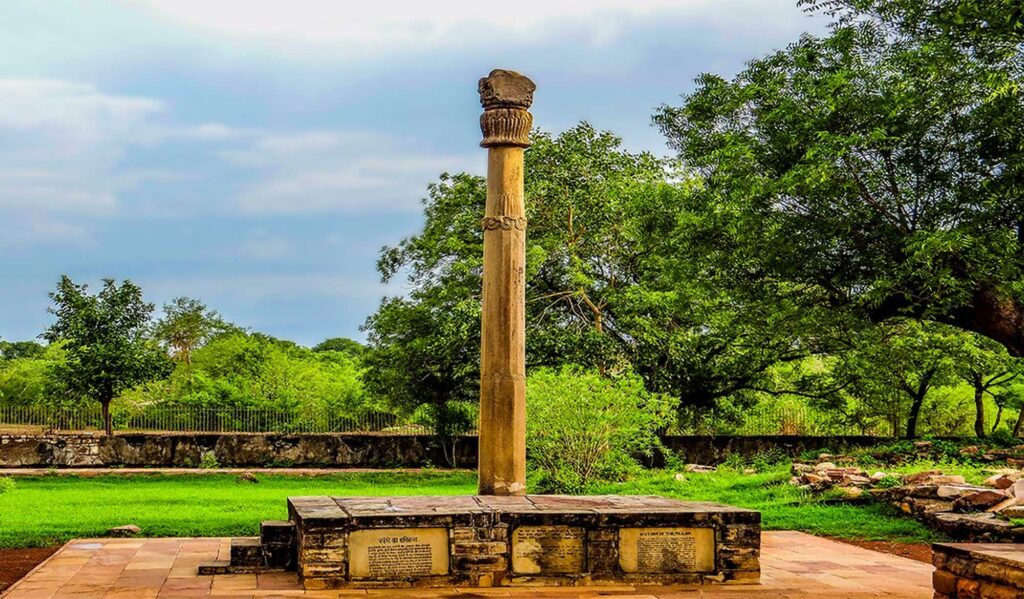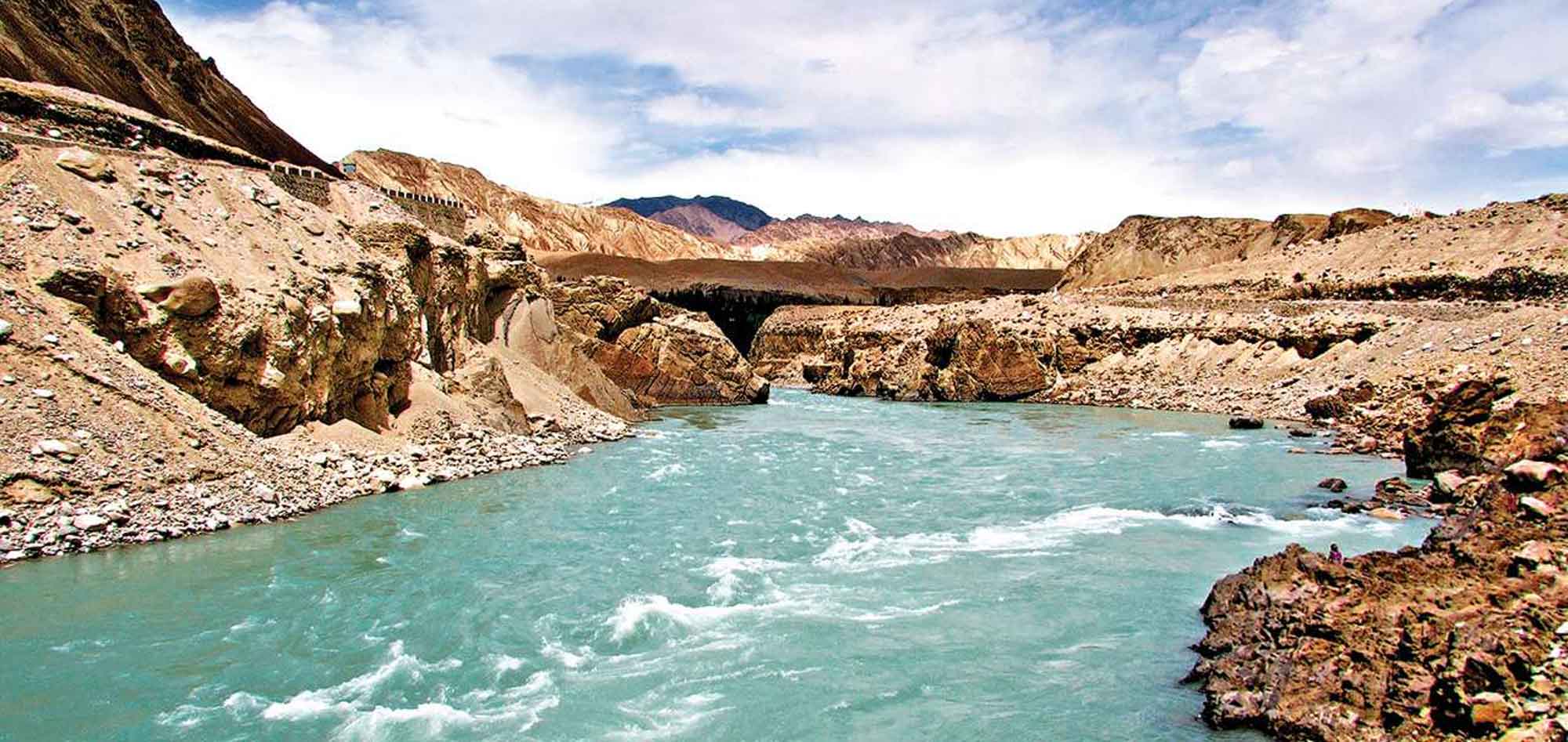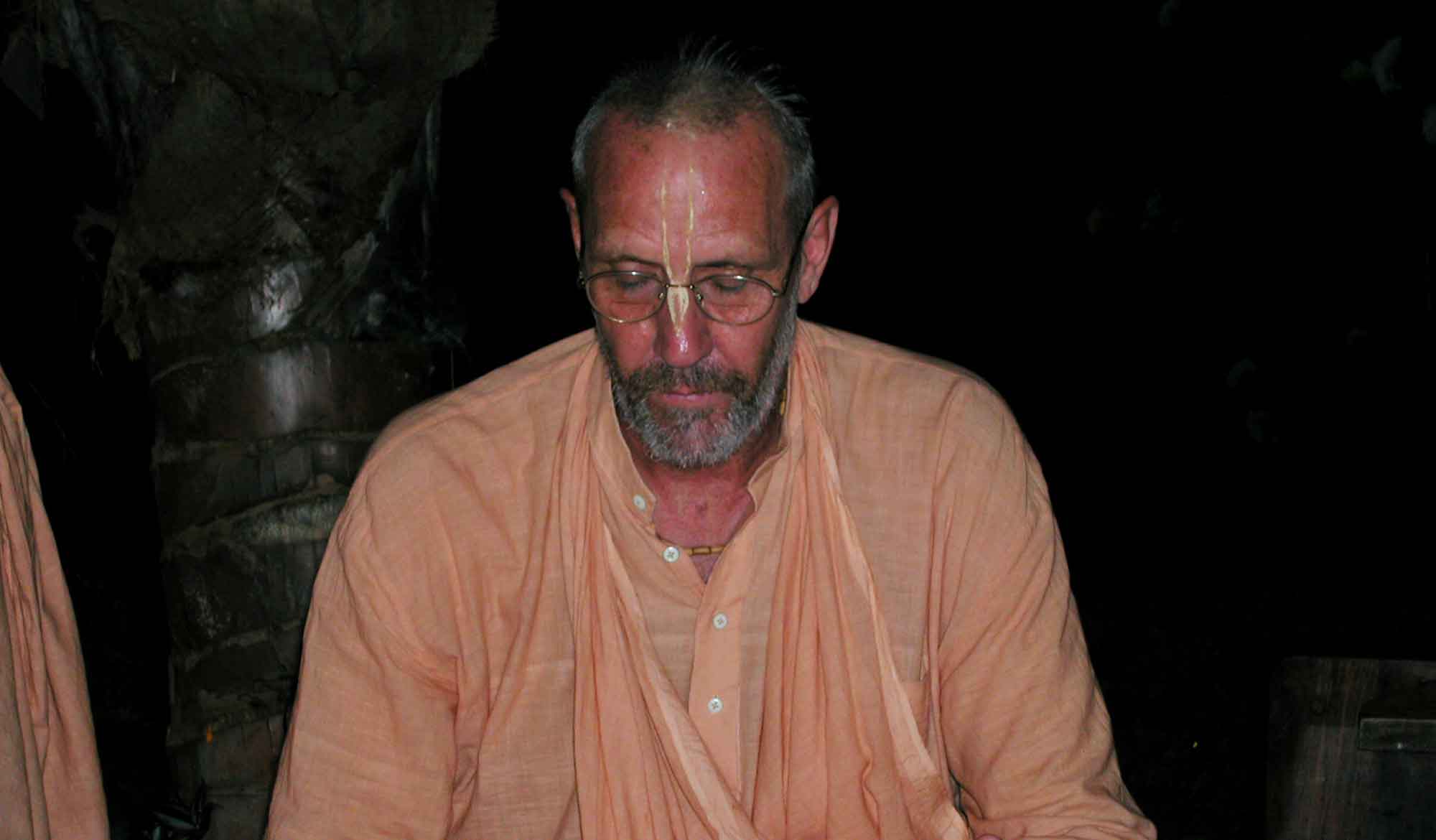by Swami B.G. Narasingha
‘Heresy, Inquisition, Jihad, Fatwa and the Hare Kṛṣṇas’ was written by Śrīla Narasiṅgha Mahārāja in July 2010 was a follow-up article to his essay, ‘Śriya Śuka.’ After receiving a barrage of complaints, insults (and a few death threats) from members of a certain Vaiṣṇava mission, Narasiṅgha Mahārāja asks if there is any difference between Christian and Muslim fanatics and the Hare Kṛṣṇas?
What do heresy, the Inquisition, jihad and fatwa have in common with some Hare Kṛṣṇas?
Mentality!
If you have done your homework and watched a few documentaries, then you will know that back in the Middle Ages heresy was no laughing matter. The Inquisition (between 1184 CE and the 1800’s) charged hundreds of thousands of innocent people with heresy and condemned them to death by being burnt at the stake. Similarly, the words ‘jihad’ and ‘fatwa’ conjure up images of Iraq and Afghanistan where innocent people are put to death by being decapitated and thousands of men, women and children suffer great tribulation under the draconian rule of fanatical clerics and their henchmen.
But the Hare Kṛṣṇas — we’re different, aren’t we?
Or are we?
Well, I would say that overall, most Hare Kṛṣṇas are different. But unfortunately a mentality similar to the Inquisition and the jihadists lives on in the minds of some so-called Hare Kṛṣṇas who are more like those suffering from NPD [Narcissistic Personality Disorder] than inspired representatives of Kṛṣṇa. Sadly, this unpleasant truth became evident when leading figures in the Hare Kṛṣṇa Movement conspired and ordered the death of one of their own members in 1986. The victim was an outspoken critic of leaders in the movement. His name was Sulocana – all but forgotten now…‘the one whose name should not be uttered’.
The murder made headline news in Los Angeles in the summer of ‘86 and sent a shock wave around the movement. Leaders, GBCs, gurus and sannyāsīs scrambled to make sure they were not implicated until justice finally found its mark and the hit man and several of those involved in the murder went to prison. Twenty-four years later all are free and back on the streets, chanting on their beads…all except for one – the man who pulled the trigger, Thomas Drescher. He is still doing his morning sādhana behind bars.
If you have read the horrifying book, Monkey on a Stick then you will know that things were very bad in the Hare Kṛṣṇa Movement during that era and that several murders (solved and unsolved) took place at New Vṛndāvana and in other parts of the world during those years — all within the movement. These murders had one thing in common — the victims were outspoken and rebellious and they crossed their leaders.
During the Dark Ages in Europe, if one crossed the Church or voiced any type of dissent it was as good as signing one’s own death warrant. There are similarities between the Church and the Hare Kṛṣṇas, though things are not as severe now as they were then. To criticize leadership in the Hare Kṛṣṇa Movement has always been the shortcut to being ostracized, ridiculed, isolated, even excommunicated — everything just short of being hung, drawn and quartered. You know… “Give the dog a bad name, then shoot him!”
But there is another development in the air and that is to single out those who have a different understanding of the philosophy of Kṛṣṇa consciousness – to condemn them as offenders and demonize them by any means. This has been going on for years. It is not surprising that in many cases, the dissenters that throw off the yoke of ‘Ultimate Authority’ are often found to have the correct philosophy. “God so much loves the little man, the meek, the speaker of truth.”
But that matters little in the halls of religious imperialism and papal bureaucracy where those suffering from narcissistic behavioural patterns may even pass as the infallible ācārya.
But hey! What’s new? In the time of Srila Bhaktisiddhānta, his life was threatened several times due to his outspoken presentation of the truth. He spoke out boldly against those who misrepresented the philosophy of Kṛṣṇa consciousness even if it put his life in danger. And today, threats of violence and even murders take place amongst members of the same mission/sampradāya! I think I know this as well as anyone. I have always been an outspoken preacher and that tendency has brought me threats of death and violence on more than one occasion.
The Hare Kṛṣṇa Movement (with all its different missions and branches) is very big and has many, many members around the world. But it is miserably weak and undernourished when it comes to proper conception/ proper spiritual philosophy.
My last Kṛṣṇa Talk article, Śriya Śuka made me quite aware of this once again. After the article was released, it wasn’t long before I received a flurry of emails denouncing me as a mahā–aparādhī (great offender), as ‘envious’ and many things worse than that. In these emails I was thoroughly condemned and warned to “prepare to be devastated”! What ‘devastated’ was supposed to mean, I don’t know for sure. I assume it meant that soon, Lord Kṛṣṇa would smite me down for my evil deed of using my brain and researching śāstra – and all because my article disagreed with the view of a popular guru of our times who claims that Śukadeva Gosvāmī was the pet parrot of Śrīmatī Rādhārāṇī.
I had to pinch myself. Was this for real? Was I being condemned, as in a heresy trial four hundred years ago? Was I next in line to be burnt at the stake? My accusers would have happily settled to see my neck in a noose, but fortunately for me emails can’t kill.
Disagree with the Church in medieval times and you were a dead man. Disagree with a Muslim cleric and a fatwa for your assassination may be issued. Disagree with a Hare Kṛṣṇa guru who has the most disciples and you find yourself in a world of excrement – criticized, ostracized, ridiculed, isolated, condemned, excommunicated or even dead, if you don’t watch your back.
I know for a fact that mine is no isolated incident. Many devotees have been, and continue to be, dealt with in the same way if they dare think for themselves – what to speak of disagree with the ‘All-knowing, omniscient guru’. This however is not a good sign for a spiritual movement.
Unless the Hare Kṛṣṇas can learn to discuss philosophical points of view without fearing that their guru is under attack, or that they have to sacrifice life and limb to protect the guru from being questioned — then you can expect the worse for the future of the Hare Kṛṣṇa Movement.
If that is the case, then the Hare Kṛṣṇa Movement will surely deteriorate (as other movements before it) into becoming nothing more than a mundane cult of dogmatic principles with an elite clergy vying for wealth, fame and followers, but devoid of any true spiritual knowledge or inner experience of Kṛṣṇa.
The solution? Abandon the thinking that your guru is the only guru and that anyone who differs from you or your guru is automatically a mahā-aparādhī or a demon. This is the mentality that consumed Iskcon in the 1980’s and caused their demise. This same mentality is now present in some groups of Hare Kṛṣṇas that originally left Iskcon to make a fresh start, but who have ended up creating a community of Hare Kṛṣṇas with the same woes! A step in the right direction at this point would be for Hare Kṛṣṇas to start learning how to think and to question and not to be afraid of the truth. Kṛṣṇa lives in the truth, so why settle for anything less?
More Articles by Swami B.G. Narasingha
The Sacred River Sindhu/Indus
‘The Sacred River Sindhu/Indus’ was posted by Swami B.G. Narasingha on his blog, narasingha.net, on October 2nd, 2011. In this short article, Narasingha Maharaja explains the significance of the River Sindhu and his pilgrimage to it. This article was later expanded into a bigger article called ‘Sindhu River – How India Got Her Name.’
Instructing the Guru
This article “Instructing the Guru” was written in April 2018 by Śrīla Narasingha Mahārāja who answers a question concerning a previous article wherein a Vaiṣṇavī writes a letter to her dīkṣā-guru and explains to him about the importance of śikṣā. In response, a question was raised by a devotee about the etiquette of a disciple instructing her guru.
The Atomic Ray – From Uniform Consciousness to Individual Conscious Units
In “The Atomic Ray - From Uniform Consciousness to Individual Conscious Units” written in 1996 Śrīla Narasiṅgha Mahārāja discusses the constitutional position of the jīva, according to Bhaktivinoda Ṭhākura and Śrī Caitanya-caritāmṛta.


![Himalayan Pilgrimage Our Pan Am jet arrived in New Delhi late one mid-September night, and by 12:15 A.M. our party of three had passed through the final immigration and customs formalities. We secured a rented car and began to make our way through the darkened streets, until soon we were outside the city and heading north. Our destination was Hardwar and Rishikesh, some 120 miles away. For months we had anticipated seeing these two holy cities, situated in the picturesque foothills of the Himalayas. Back in New York it had seemed like a distant dream. Now, we knew the dream would soon become a reality. Śrīla Prabhupāda, the founder and spiritual master of the International Society for Kṛṣṇa Consciousness, describes the Himalayas as a centuries-old refuge for great yogis and ascetics aspiring to realize the Absolute Truth. The Himalayas are also famous as the source of the sacred Ganges. And it was this river, glorified for its intimate connection with the manifest pastimes of Lord Kṛṣṇa, that had inspired our pilgrimage. We had come to visit the source of the glorious Ganges.
We arrived in Hardwar before dawn and glimpsed in the moonlight the swift-flowing river. Drawing from the western Himalayas and the northern slopes of the Vindhya range, the Ganges flows eastward, until, near Allahabad, it is joined by another sacred river, the Yamuna. The Ganges the continues eastward until it reaches the Bay of Bengal, a total distance of more than fifteen hundred miles.
Perhaps the most extraordinary thing about the Ganges is her purity. Even today, when she is exposed to a tremendous amount of chemical waste as well as other pollutants, she remains pure, and millions of pilgrims come to bathe in and drink her waters. Dr. John Howard Northrup, a co-winner of the Nobel Prize for Chemistry in 1946, has said, “We know the Ganges is highly contaminated. Yet Indians drink out of it, swim in it, and are apparently not affected. Perhaps bacteriophage [a bacteria-destroying virus normally present in sewage] renders the river sterile.” Whatever the reason, the Ganges is pure. And in Hardwar viewing the Ganges, we had little doubt of this. In fact, Hardwar was itself a gateway into this purity, and any perceptive pilgrim can sense it. “Hardwar” is a common spelling and pronunciation of the Sanskrit hari-dvara. Hari is a name for God, and dvara means “door” or “gate.” Thus the holy city of Hardwar is celebrated as the gateway to God.
Deciding to rest for an hour or so, until sunrise, we spread out our sleeping bags. We talked excitedly about the adventure the coming day would hold, and as the moments passed, we realized that we would not be able to sleep. Thus, after an hour and a half, just as the sun began to climb over the Himalayan foothills, we rolled up our bags and started our day. Placing three drops of Ganges water on our heads—a reverential gesture—we entered the water to take our morning bath. This was at Har ki Puri, a famous bathing ghāṭa visited by millions of pilgrims each year.
According to Vedic tradition, one who bathes in the Ganges is freed from the reactions of all his past sins and also becomes eligible for liberation from birth and death. Of course, if after bathing one returns to sinful life, the purification loses its meaning. One becomes like the elephant who bathes and then returns to the shore and spreads mud all over his body. Real liberation means to become free not only from the reactions of past sins but also from the desire to commit further sins. This is clearly taught in the Vedic literature, especially in the commentaries by His Divine Grace A.C. Bhaktivedānta Swami Prabhupāda. Thus, as Srila Prabhupāda’s disciples, we were aware of the pitfalls, and we resolved to bathe in the Ganges with proper respect. We also resolved not to dirty ourselves again, but to be pure by strictly adhering to our vows of changing the Hare Kṛṣṇa mantra on our beads sixteen rounds a day (One round is 108 repetitions of the Hare Kṛṣṇa mantra) and abstaining from meat-eating, illicit sex, intoxication, and gambling.
From Hardwar we drove fifteen miles along the Ganges to Rishikesh, the location of numerous schools and āśramas. Thousands of years ago, yogīs and ṛṣis would migrate here as well. We stopped at a spot close to the river and the Lakṣmaṇa-Jhula Cable Bridge. As we sat on the rough, rocky riverbank, we looked out at the many granite boulders that jutted out of the waters. Feeling inspired by the auspicious setting and the awesome Himalayas looming in the distance, we unpacked our beads and began to chant—Hare Kṛṣṇa, Hare Kṛṣṇa, Kṛṣṇa Kṛṣṇa, Hare Hare / Hare Rama, Hare Rama, Rama Rama, Hare Hare.
As we sat absorbed in our chanting, we noticed two men who appeared to be Westerners crossing the Ganges via the cable bridge. The young men, upon arrival, sat on the large rocks, a few hundred feet away from us. Sitting cross-legged, they began to meditate, their eyes tightly shut. After barely ten minutes they broke their meditation and began smoking, revealing their meditation to be a farce. They both began carrying on like typical tourists, oblivious of the sacred place of pilgrimage. This reminded us that the full benefit of any spiritual endeavour, such as visiting the source of the Ganges, is to be had only under the direction of a bona fide spiritual master. Our two friends simply did not know better.
Actually the meditation practiced by the sages of antiquity is not possible today. Even if one retreats to the Himalayas, one’s old habits—like smoking—will return. Therefore, the Vedas describe the present age, Kali-yuga, as one in which silent meditation is impossible. To perfect the techniques of yogic meditation traditionally took hundreds if not thousands of years, in an age in which such a long duration of life was possible. Thus, for this age the Vedic literature recommends mantra meditation, chanting aloud the names of God. Today, the real yogīs chant Hare Kṛṣṇa.
After completing our vow of chanting sixteen rounds on our beads, we proceeded toward our destination: Gomukh, the source of the Ganges. There, at fourteen thousand feet, the Ganges emerges from beneath the Bhagirathi glacier.
The journey, first by car and then by foot, was to take four days-barring any trouble. But on our first day we ran into trouble. The road had been washed out by a tributary of the Ganges, and our car could go no further. So with only our camera equipment and light shoulder bags containing the bare necessities, we continued on foot.
Soon we came to a swift mountain stream. On the other side, we boarded a bus that took us to the high-country town of Uttar Kashi, where we spent the night. Early the next morning we caught the bus for the town of Lanka, sixty miles away. Our progress was slow because of the treacherous mountain roads, and our journey took more than seven hours. The frustrations of the arduous trip were counterbalanced, however, by occasional glimpses of snowy Himalayan peaks in the distance.
After spending the night in Lanka, we proceeded on foot to Gangotri—the end of the line for most pilgrims. Here, at the base of this magnificent glacier valley, the Ganges surged forward, plunging forty feet into a deep and narrow ravine. The silvery Ganges water was cold and clear, and as we tasted it Lord Kṛṣṇa's words came to us: "I am the taste of water."
Taking the help of a local guide, we began the last eleven miles of our upward pilgrimage, from Gangotri at ten thousand feet to Gomukh at fourteen thousand feet. As we proceeded, we noted frost on the ground and a light snowfall on the surrounding peaks. Keeping a brisk step, we hiked up the winding path, higher and higher. Evening came, and we camped for the night. The next morning, with only three miles remaining, we set out for Gomukh. When we arrived, we saw that the Ganges appeared to be coming out from under a very large stone cliff. But upon closer inspection we realized this was not a stone cliff at all, but a gigantic wall of solid ice. Behind the massive glacier towered the Bhagirath peak, a temple spire crowning the sacred Ganges. This holy spot is as far as one can go in tracing the origin of the sacred river. We felt fortunate to be there.
As dutiful pilgrims, we decided to pay homage by taking our midday bath in the icy waters. This was as much an austerity as reaching the place, but we ecstatically chanted "Hare Kṛṣṇa" and took our-brrr-bath. It was great fun and spiritually purifying as well.
After bathing, we discussed the descriptions of the origin of the Ganges presented in the Vedic literature. Although Gomukh is the origin of the Ganges here on earth, it is said that the Ganges actually originates in the heavenly planets. King Bhagiratha, by his prayers, brought the Ganges to our planet millennia ago. And it was Vāmanadeva, an incarnation of Lord Kṛṣṇa, who brought water from the spiritual world to the material to create the sacred Ganges. As we discussed all this, we realized how sceptical many Westerners would be. But we weren't about to let someone else's limited, materialistic vision influence our appreciation of the Lord's divine pastimes. The Supreme Personality of Godhead can do anything, no matter how difficult it may seem to mundane eyes. We were there, and we could feel the spiritual energy.
For the devotee of the Lord, the descent of the Ganges is not a fanciful story; it is fact. All too often mundane scholars make the mistake of relegating transcendental phenomena to the realm of mythology or legend. Trying to accommodate the unlimited within their limited scope, they ridicule Vedic stories as "impossible" or "fantastic." Well, the descent of the Ganges is fantastic and, by mundane standards, impossible. But is a transcendental phenomenon to be judged by mundane standards? We shouldn't try to make God fit within our limited experience and understanding. Indeed, He is always beyond these things. Without His being able to appear in various incarnations and perform superhuman activities, there is no meaning to the words "Supreme Lord." He is the source of all "fantastic" things, like the Ganges. And if one doesn't believe it, let him go to the Himalayas, to Gomukh, and see for himself.](https://swaminarasingha.com/wp-content/uploads/2020/12/Himalayan-Pilgrimage-1024x599.jpg)










